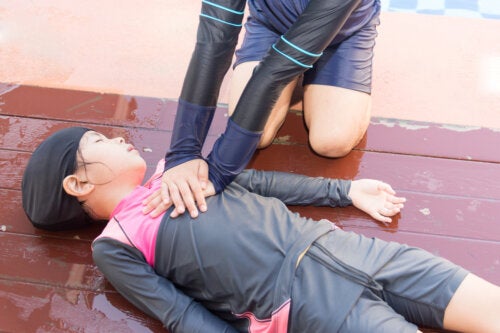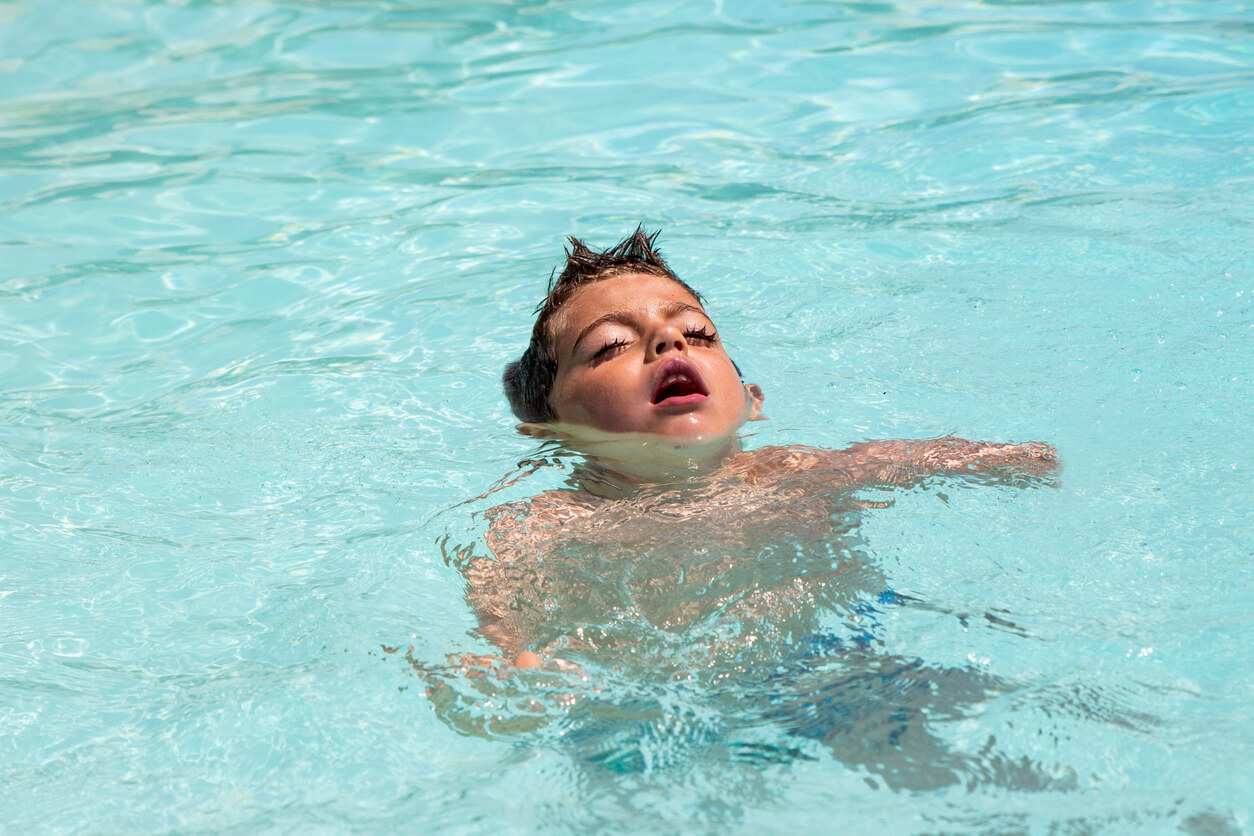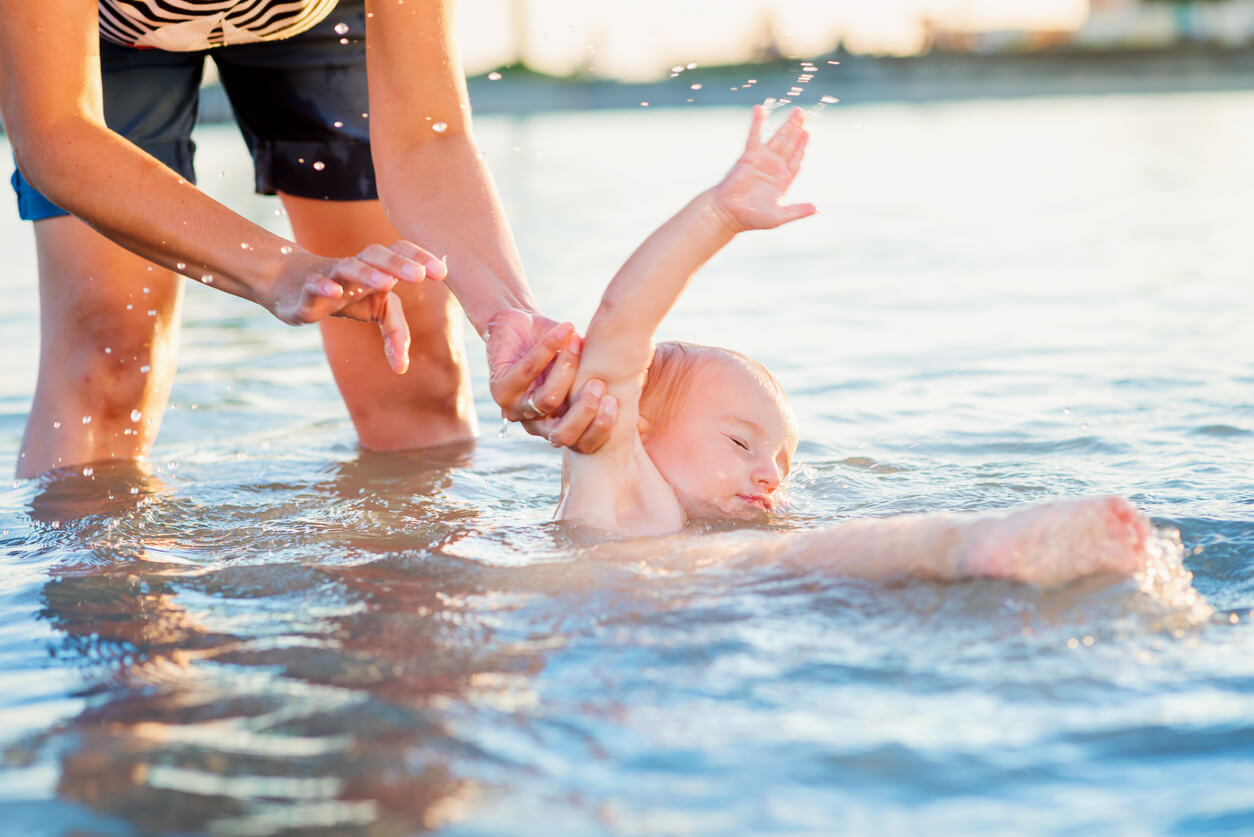What Is Secondary Drowning in Children?

When warm temperatures come around, drowning is one of the worries that come to mind when your child goes into the sea or the swimming pool. But have you heard of the term secondary drowning? This terminology is often used to refer to a drowning episode in which the victim regains consciousness and it seems that the danger has passed. However, the recovery is only momentary.
When children spend a lot of time in the water, sometimes, even without knowing how to swim, they’re not aware of the danger they’re in. Drowning among children between the ages of 5 and 14 is the leading cause of accidental childhood mortality worldwide. Moreover, these drownings tend to occur more frequently in private pools than in public pools. Do you want to know exactly what secondary drowning is, what its symptoms are, and what to do to prevent it? Keep reading.
What is drowning?
According to WHO and most health agencies worldwide, drowning is defined as the development of breathing problems or difficulties due to immersion/submersion in a liquid medium. Its outcome can be classified as follows: Fatal, non-fatal with injury or illness, or non-fatal without injury or illness. It’s estimated that for every drowning that results in death, there are five non-fatal drownings.

What does the term “secondary drowning” refer to?
This term has been used to describe conditions in which the problems caused by drowning don’t occur immediately. However, the medical community rejects this term. But why do they come to this conclusion? Let’s take a look at the issue.
The medical community maintains that we shouldn’t speak of secondary drowning or near-drowning, just as we don’t say near-heart attack if the person who has suffered it hasn’t died, or near-accident, for the same reason. Professionals maintain that any outcome or difficulties resulting from immersion in liquid should be called drowning, but with different outcomes.
Drs. Seth Collings Hawkins, Justin Sempsrott, and Andrew Schmidt, who specialize in this subject, explain this in their publication Drowning in a Sea of Misinformation: Dry Drowning and Secondary Drowning.
Drowning symptoms
A child may be rescued, resuscitated, and have no subsequent symptoms. However, in other cases, water entering the lung causes them to have early symptoms after being resuscitated, such as the following:
- Persistent and repeated coughing
- Difficulty breathing
- Temporary confusion
- Abnormal behavior, inattention, and trouble saying words, among others
- Difficulty performing activities that the person can usually perform
- Extreme tiredness
- Foam from the nose or mouth
- Drowsiness
The observation of any of these symptoms after a drowning episode implies urgent attention by a physician. This being said, there’s no record of children with no symptoms at all eventually losing their lives a few days or weeks later.
Any water in the lungs leads to coughing and other symptoms immediately after drowning. In short, doctors agree that there’s no such thing as secondary, but that it’s all a consequence of the drowning process.

How to prevent drowning?
It should be noted that the most important thing about drowning is prevention. In this way, it’ll be easier to avoid incidents. We’re going to see a series of recommendations that are essential if we want to reduce these accidents in the aquatic environment:
- Take children swimming so that they learn to swim. This is necessary, but not sufficient, to prevent children from drowning. Even if the little ones know how to swim, we should never neglect them.
- In public places, such as the sea or swimming pools, it’s important to choose areas where there are lifeguards.
- When they’re babies or small children, we can’t be farther away from them than the distance that our arms can reach to grab them.
- When they can swim, never stop supervising and watching them. Any distractions should always be avoided while children are swimming.
- Adults accompanying children should know how to swim, in case they have to initiate a rescue.
- It’s important to have notions of cardiopulmonary resuscitation maneuvers to carry them out if necessary.
- Adolescent children must know that under the influence of alcohol or other drugs, swimming would entail serious risks and could end up with fatal consequences.
About secondary drowning
The term “secondary drowning” has been used mainly by the press. In that way, they usually refer to problems resulting from drowning after the person has been resuscitated. The point is that the entire medical community denies the existence of it, while attributing it to the consequences of drowning.
Ultimately, when a child suffers a drowning, it’s important to observe the symptoms and have the child examined by a physician. Therefore, any response of the body beyond a momentary cough should be considered a dangerous event.
All cited sources were thoroughly reviewed by our team to ensure their quality, reliability, currency, and validity. The bibliography of this article was considered reliable and of academic or scientific accuracy.
- Denny, S. A., Quan, L., Gilchrist, J., & McCallin, T. (2019). Prevención de ahogamiento. Contexto, 143, 5.
- Fernández Sainz-Maza, E. (2017). Ahogamientos por Inmersión y Estrategias Preventivas. https://repositorio.unican.es/xmlui/handle/10902/11698
-
Ternero, T. Los peligros del verano: ahogamiento en niños. AUTORES: Tovar Ternero, Mª del Rocío; Fernández Leiva, Martina y Fue.http://congresovirtual.enfermeriadeurgencias.com/wp-content/uploads/2016/11/14.pdf
